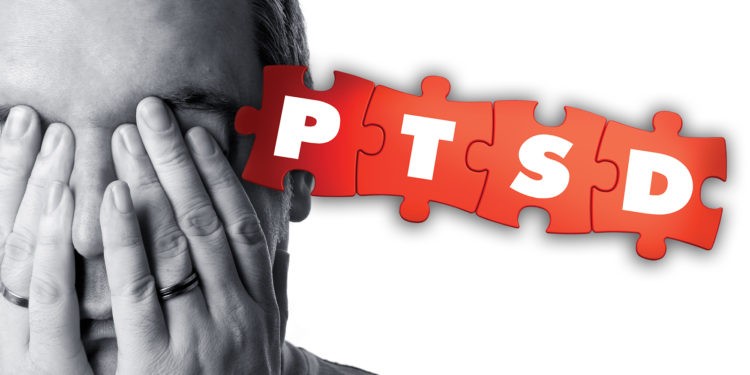Erase The Stigma of PTSD

The brain is at once complex and simple, resilient and fragile, and known and unknown. That is what makes the understanding of Post-Traumatic Stress Disorder, or PTSD, so difficult yet so crucial. Exposure to risk and trauma has always been part of the human experience, and we have long understood that people who have experienced or witnessed a traumatic event can develop lasting and sometimes debilitating symptoms as a result of that experience. What most do not know, it is far more complex and multifaceted than what is easily understood.
WE KNEW BUT DIDN’T UNDERSTAND
If there is one thing that connects us as humans more than anything else it is pain. Interestingly, our ancestors who witnessed attacks by saber tooth tigers likely had the same psychological response to that trauma as we do to modern ones. It is a theme of commonality we find throughout history, even with limited understanding. For example, Shakespeare’s Henry IV appears to meet many, if not all, of the diagnostic criteria for PTSD, as have other heroes and heroines throughout the world’s literature. However, throughout history, it was assumed that some weakness within the individual rather than the traumatic event itself was the cause.

WHAT IS PTSD?
According to the American Psychiatric Association, PTSD is a psychiatric disorder that can occur in people after having experienced serious events such as war, abuse, or serious accidents. It causes sufferers to experience intense, disturbing thoughts and feelings related to the event long after the event has ended. Some experience vivid flashbacks so real that what is actual and what is memory is indiscernible. Sufferers may become reactionary, having angry outbursts, or behave recklessly or in a self-destructive way.
Based on the assumption that most individuals have the capacity to cope with normal stresses, such as failure and rejection, the framers of the original PTSD diagnosis believed other stressors such as war, murder, or torture are outside the range of normal human experience and therefore more likely to cause PTSD.
Today, we understand that not every traumatized person develops chronic or even short-term (acute) PTSD. More importantly, we understand that not everyone with PTSD has been through a dangerous event. Some experiences, like the sudden, unexpected death of a loved one, can also cause PTSD. Symptoms usually begin early, within three months of the traumatic incident, but sometimes they begin years afterward. Symptoms must last more than a month and be severe enough to interfere with relationships or work to be considered PTSD. The course of the illness varies. Some people recover within six months, while others have symptoms that last much longer. In some people, the condition becomes chronic.

RECENT ADVANCES IN UNDERSTANDING, TREATMENT AND PREVENTION
Recent studies have provided additional understanding of how PTSD develops and persists, according to the May/June special issue of Harvard Review of Psychiatry. A growing body of evidence suggests that it is possible to interrupt the process leading to the development of PTSD symptoms, according to an introductory article by Guest Editor Kerry J. Ressler, M.D., Ph.D., of McLean Hospital/Harvard Medical School, Belmont, Mass. Dr. Ressler writes: “PTSD, while one of the most recently defined syndromes in psychiatry, may also be one of the earliest to benefit from progress in neurobiology and advances in translational approaches to brain function and behavior.”
Today, researchers are testing treatments that include virtual reality exposure to trauma and even “cognitive vaccines” such as playing Tetris to disrupt the brain pattern. More controversially, after years of campaigning, researchers from the Medical University of South Carolina and the Multidisciplinary Association for Psychedelic Studies in California got the FDA and DEA to approve a small pilot clinical trial of MDMA administration for treatment resistant PTSD sufferers. Under close clinical monitoring and in conjunction with intensive psychotherapeutic engagement, 20 participants were randomized to two administrations of either MDMA or a placebo. While the trial was extremely small and the results anything but conclusive, 83% of the MDMA group exhibited substantial treatment response compared to 25% in the placebo group.
Dr. Stephen Maren, University Distinguished Professor in the Department of Psychological and Brain Sciences recently published research concerning the psychological and neural basis of PTSD in Proceedings of the National Academy of Sciences of the United States of America (PNAS). The study looked at areas of the brain which regulate emotion in relation to fear relapse, a significant problem for those with PTSD.
“The work shows that stress increases the activity of fear-promoting regions of the prefrontal cortex, while at the same time reducing activity in neighboring fear-reducing regions,” Maren said. “This shift in brain activity could be mimicked by increasing the activity of neurons that release the fight-or-flight neurotransmitter, norepinephrine. This finding paves the way for new treatments that reduce fear and its relapse after therapy.”
This new understanding can lead to improved diagnosis and treatment of PTSD.
JUNE IS PTSD AWARENESS MONTH
Today we understand that PTSD can occur in all people, in people of any ethnicity, nationality or culture, and any age. PTSD affects approximately 3.5 percent of U.S. adults, and an estimated one in 11 people will be diagnosed PTSD in their lifetime. Women are twice as likely as men to have PTSD.

Recently, Singer and actor Ariana Grande shared her brain scan and opened up her own PTSD resulting from the suicide bombing that killed 22 people at her concert in Manchester, United Kingdom, in May 2017.
“I know those families and my fans, and everyone there experienced a tremendous amount of it as well,” Grande said in a CNN article of suffering the symptoms of PTSD. “I feel like I shouldn’t even be talking about my own experience –– like I shouldn’t even say anything.”
The artist shared her brain scan on Instagram, saying that it was “hilarious and terrifying” and that PTSD was “no joke”.
The unfortunate fact about PTSD is that most do not get the help they need. Even though effective treatments exist, one of the biggest barriers to getting help is simply a lack of awareness. PTSD is something people are hesitant to discuss, with historical biases looming over the diagnosis. June is PTSD Awareness month and its aim is to stamp out the stigma surrounding the disorder increase understanding that for anyone suffering there are treatments that lead to a better quality of life, continued research, and most importantly, an abundance of hope and support.
For more information: National Center for PTSD https://www.ptsd.va.gov/understand/awareness/index.asp






